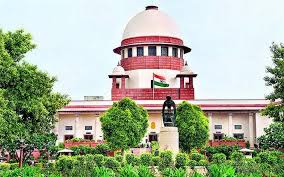The Supreme Court, in a judgment dated February 24, acquitted two individuals convicted of murder, holding that the discovery of the deceased’s body was not proven beyond a reasonable doubt against the appellant. The Court emphasized that under Section 27 of the Evidence Act, the evidentiary value of a confessional statement is contingent on whether the discovery was made in furtherance of such a statement.
A bench comprising Justices Abhay S. Oka and Ujjal Bhuyan noted that if the discovery of the deceased’s body was not established as a consequence of the appellant’s confession, the confession itself could not be relied upon under Section 27.
“If that be the position, not only is the chain of circumstantial evidence incomplete, but the prosecution’s case also fails to establish the appellant’s guilt beyond reasonable doubt. Therefore, the appellant deserves the benefit of the doubt and is entitled to an acquittal on this count.”
Background of the Case
The case originated from an FIR lodged by the deceased’s father, alleging that the appellant had kidnapped his minor daughter. The appellant’s family had assured him that the two would be married, but after four days without any trace of his daughter, the complainant approached the police. The appellant was arrested, and during the investigation, the deceased’s body was found.
The Trial Court convicted the appellant on multiple charges, including murder, and the High Court upheld the conviction, primarily based on three key circumstances:
1. The appellant and the deceased were last seen together.
2. The appellant allegedly made an extrajudicial confession before prosecution witnesses.
3. The dead body was recovered following the appellant’s confessional statement.
However, the High Court disregarded the extrajudicial confession, stating that it was made in the presence of police officers. Despite this, it convicted the appellant based on the other two circumstances.
Supreme Court’s Analysis
At the outset, the Supreme Court highlighted that Section 26 of the Evidence Act, which bars confessions made in police custody from being admissible, must be read in conjunction with Section 27, which allows the admissibility of information leading to the discovery of a fact.
Citing Pulukuri Kottaya v. King-Emperor, the Court reiterated that for Section 27 to apply, the accused’s statement must indicate prior knowledge of the existence of the fact discovered.
Upon examining the prosecution’s evidence, the Court found several inconsistencies. One witness stated that the appellant had confessed at the police station and disclosed the location of the body. However, the same witness later contradicted himself, saying that he had actually seen the deceased’s body at the police station.
“Except for PW-6, none of the prosecution witnesses were present at the scene where the body was allegedly recovered at the appellant’s instance. They had only seen the body at the police station.”
Further, PW-6’s testimony itself had discrepancies, as he claimed that it was the co-accused, not the appellant, who had confessed to the crime. Given these contradictions, the Court concluded that the deceased’s body could not be said to have been recovered based on the appellant’s disclosure, making Section 27 inapplicable.
“It is difficult to accept the prosecution’s claim that the deceased’s body was recovered near the Pandu railway track at the appellant’s instance. Therefore, Section 27 of the Evidence Act cannot support the prosecution’s case.”
Failure to Establish a Complete Chain of Circumstantial Evidence
The Court underscored that in a case based solely on circumstantial evidence, every link in the chain must be conclusively proven. Since one of the three key circumstances was discarded by the High Court, the chain of circumstantial evidence remained incomplete, making the conviction unsustainable.
Referring to Ramu Appa Mahapatar v. State of Maharashtra, the Court reiterated that in cases relying purely on circumstantial evidence, conviction is only justified when all circumstances unerringly point to the accused’s guilt.
Regarding the last-seen-together theory, the Court examined PW-2’s testimony, which was inconsistent. PW-2 initially stated that the appellant had taken the deceased forcefully but later admitted that the two were in a relationship and that the deceased had gone with the appellant willingly. Additionally, the deceased’s body was found five days later, creating a significant time gap that weakened the prosecution’s case.
Citing Kanhaiya Lal v. State of Rajasthan (2014) 4 SCC 715, the Court held:
“Given the considerable time gap between the deceased being last seen with the appellant and the recovery of the body, it cannot be said with certainty that the appellant alone committed the offence.”
Absence of Motive Further Weakens Prosecution’s Case
The Court also highlighted a critical lapse in the prosecution’s case—the failure to examine material witnesses. Despite claims that the appellant’s mother and brother-in-law had assured the complainant of the deceased’s marriage, neither was presented as a witness. Their non-examination created a gap in establishing motive.
“It has come on record that the appellant and the deceased were in love. The appellant’s mother and brother-in-law had assured PW-1 that they would arrange the marriage. Thus, there could not have been any motive for the appellant to cause the deceased’s death.”
Reinforcing this, the Court relied on Shivaji Chintappa Patil v. State of Maharashtra, which emphasized that motive plays a crucial role in completing the chain of circumstantial evidence in cases based on inference.
Verdict: Acquittal Granted
In light of these findings, the Supreme Court concluded that the prosecution failed to prove each element of its case beyond a reasonable doubt.
“When the prosecution failed to establish all the circumstances against the appellant, the lower courts were not justified in convicting him.”
Accordingly, the Court allowed the appeal and acquitted the appellant.
Case Name: Md. Bani Alam Mazid @ Dhan v. State of Assam, Criminal Appeal No. 1649 of 2011.



